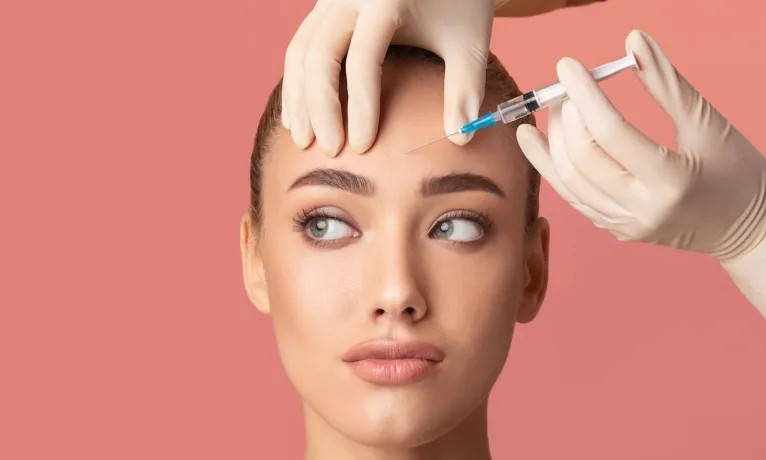According to the U.S. Centers for Disease Control and Prevention (CDC), as of Apr. 12, 2024, a total of 18 people from nine states have reported adverse reactions after receiving Botox injections from unlicensed or untrained individuals or in “non-healthcare” settings, such as homes and medi-spas. The states reporting adverse reactions to Botox include Colorado, Florida, Illinois, Kentucky, Nebraska, New Jersey, New York, Tennessee, and Washington.1
Public health and regulatory officials have found that some people received injections with counterfeit products or products with unverified sources.
Botox uses a purified form of a neurotoxin known as botulinum toxin that prevents muscles from moving for a limited time. The product is often used to prevent or ease facial wrinkles for cosmetic purposes.2 According to Public Citizen, there have been thousands of Botox-related adverse event reports made to the FDA between 1989 and 2021.3
A study published in Advances in Dermatology and Allergology, stated that botulinum toxins are among the most toxic poisons that can lead to transient and benign events, and potentially serious events.4 Benign side effects are localized and usually reversible, which tend to develop within a few days after the injection usually disappear without any treatment.
The aesthetic and functional adverse effects are associated with different muscle responses to botulinum toxin or with misplacement of botulinum toxin. The serious events are from prior injuries due to the systemic spread of toxin leading to a condition known as botulism.5
Botulism is a serious condition caused by a bacteria known as Clostridium botulinum, which produces a toxin that attacks the body’s nerves and causes muscle paralysis. Some of the symptoms of botulism include difficulty swallowing, muscle weakness, double vision, drooping eyelids, blurry vision, slurred speech, difficulty breathing and difficulty moving the eyes. If untreated, symptoms may worsen and involve to full paralysis of some muscles, including those used in breathing and in the arms and legs.6
Sixty Percent of Women Hospitalized for Adverse Reactions to Counterfeit Botox
Nine (60 percent) of 19 people in the U.S. have been hospitalized and four (21 percent) treated with botulism anti-toxin because of indications that the botulinum toxin could have spread beyond the injection site. Five people have been tested for botulism and their results were negative.7
All reports of adverse reactions to Botox are from females ranging in age 25 to 59 years old with a median age of 39 years. Eighteen (95 percent) of people reported receiving botulinum toxin injections for cosmetic purposes. All reports acknowledge receiving botox injections from unlicensed or untrained individuals or in non-healthcare settings, including homes and spas.8
The U.S. Food and Drug Administration (FDA) said:
The products appear to have been purchased from unlicensed sources and could be misbranded, adulterated, counterfeit, contaminated, improperly stored and transported, ineffective and/or unsafe.”9
The FDA further stated that that agency is working with Botox manufacturer AbbVie, Inc. to identify and remove any suspected counterfeit Botox products in the U.S. The FDA said that at present, it has found no evidence to indicate that the reports of adverse affects of injections are linked to the company’s FDA-approved Botox.10
Public Citizen Petitioned the FDA to Strengthen Safety Warning for Botox
In December 2023, Public Citizen, a non-profit consumer rights advocacy group, petitioned the FDA asking that the black box warning of both cosmetic and therapeutic Botox and related drugs should make it clear that they are associated with systemic iatrogenic (induced in a patient by medical treatment) botulism and other symptoms, even when used at recommended doses, in initial or repeated treatment. Iatrogenic botulism is a complication of treatment with Botox and related drugs due to their potential for diffusion and systemic spread beyond injection sites resulting in progressive muscle paralysis.
Azza AbuDagga, PhD, health services researcher at Public Citizen’s Health Research Group, stated:
Our petition is based on clear post-marketing evidence that refutes industry propaganda claiming that Botox and related drugs are ‘always safe’ and that no ‘definitive’ cases of botulism have occurred with recommended doses.11
Public Citizen analyzed the FDA’s Adverse Event Reporting System (FAERS) from January 1989 through March 2021 and identified 5,414 reports with “serious outcomes” from Botox and related product treatments including death, life-threatening events, hospitalization, or disability. In all these reports, Botox or a related drug was the only primary suspect.
Dr. AbuDagga said:
Due to the voluntary-reporting nature of FAERS data, our analysis most likely underestimates the true extent of the problem.
In addition to a strengthened black box warning, Public Citizen asked the FDA to remove three misleading promotional statements from the labeling of Botox and Botox Cosmetic. These statements, which do not appear in similar labeling in other countries such as Canada and the United Kingdom, claim that no definitive serious adverse events related to distant spread of the toxin’s effect has occurred with the use of recommended doses of these drugs for certain indications.12
If you would like to receive an e-mail notice of the most recent articles published in The Vaccine Reaction each week, click here.
Click here to view References:2 Edwards E. CDC investigating botched Botox shots in 9 states. NBC New York Apr. 16, 2024.
3 Leroy L. US consumer group seeks stronger warnings on Botox, similar treatments. Reuters Dec. 12, 2023.
4 Witmanowski H, Błochowiak K. The whole truth about botulinum toxin – a review. Postepy Dermatol Alergol. 2020; 37(6): 853-861.
5 Ibid.
6 CDC. Symptoms of Botulism. Feb. 9, 2021.
7 CDC. Harmful Reactions Linked to Counterfeit “Botox” or Mishandled Botulinum Toxin Injections. Apr. 15, 2024.
8 Ibid.
9 Gibson K. Counterfeit Botox blamed in 9-state outbreak of botulism-like illnesses. CBS News Apr. 16, 2024.
10 Ibid.
11 Public Citizen. New Public Citizen Petition Asks FDA For Stronger Safety Warnings For Botox and Related Drugs. Dec. 12, 2023.
12 Ibid.













5 Responses
This is what happens when a person is prideful, and thinks they have look younger.
Then we are all guilty.
Let he who has no sin cast the first stone.
Some people (like myself) get botox for migraines; others for bruxism/teeth grinding. Your comment sounds angry, judgmental and silly.
A Very Dear Friend of mine……..had Botox many years ago……in the late 90’s. She didn’t need it………she was Naturally Beautiful…….Indian Descent. Entering her late 70’s………she was determined to be “more beautiful…….not to Age”. She got Headaches, arm pains & then neuropathy. Can I prove it was from the Botox……..No. But I sure wonder about the Source of the Botox. I wanted to check out the Clinic she went to in Long Bch, Ca. – but she Refused to give me the name. SAD!! The Commercials on T.V. ads now are Frequent………..something I’ve never seen before.
WHY wouldn’t she give you the name of the clinic? Weird.